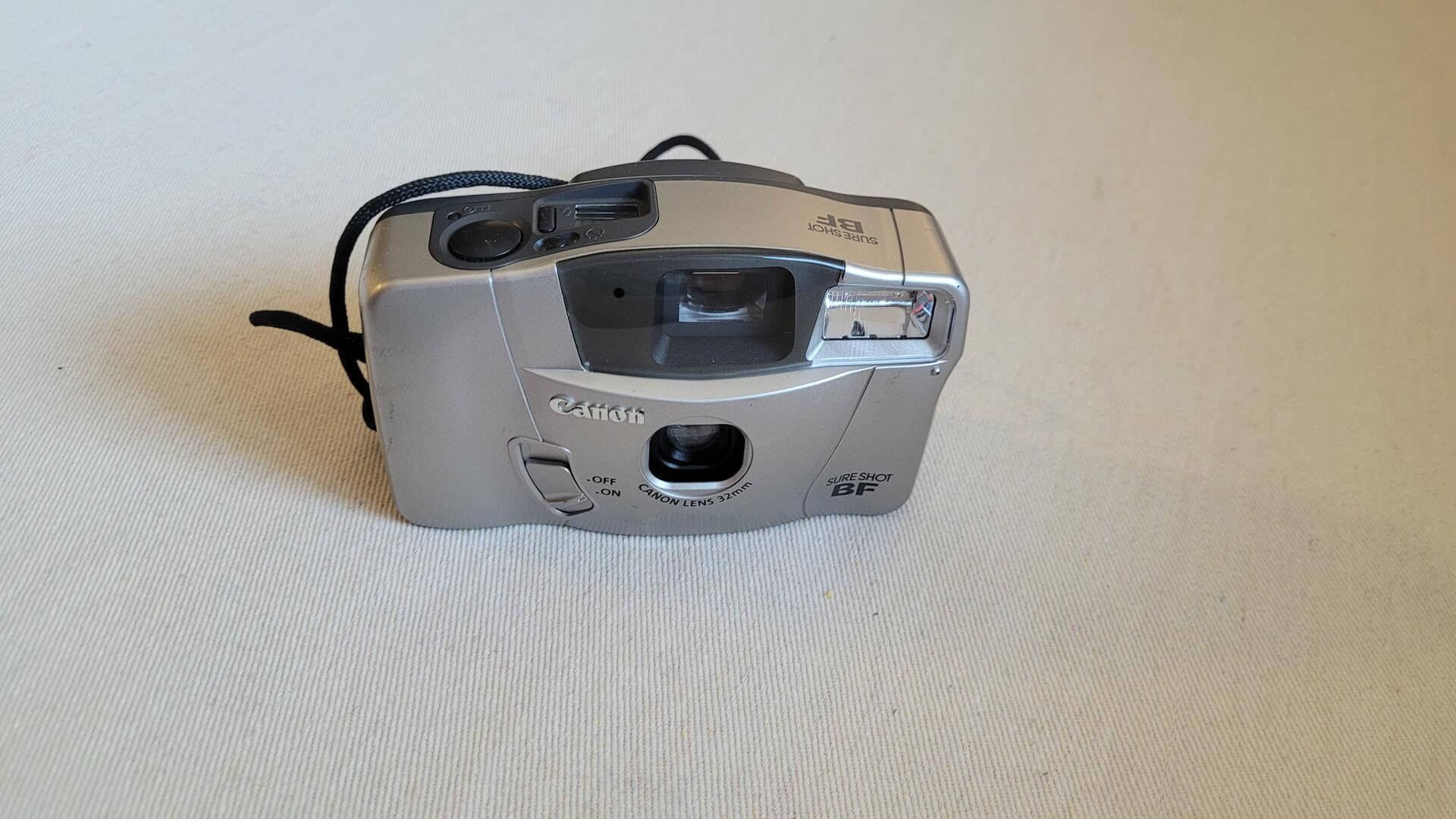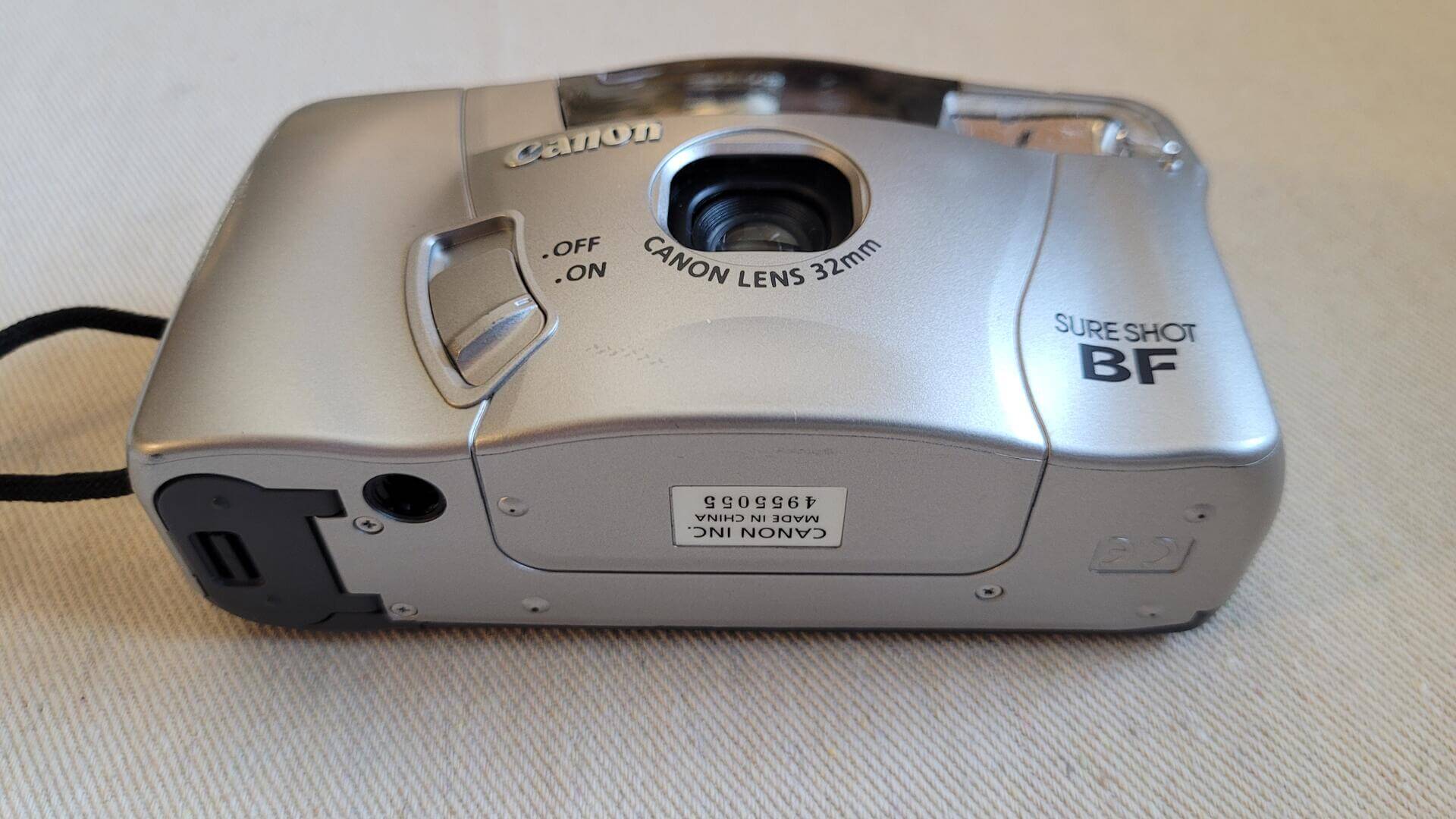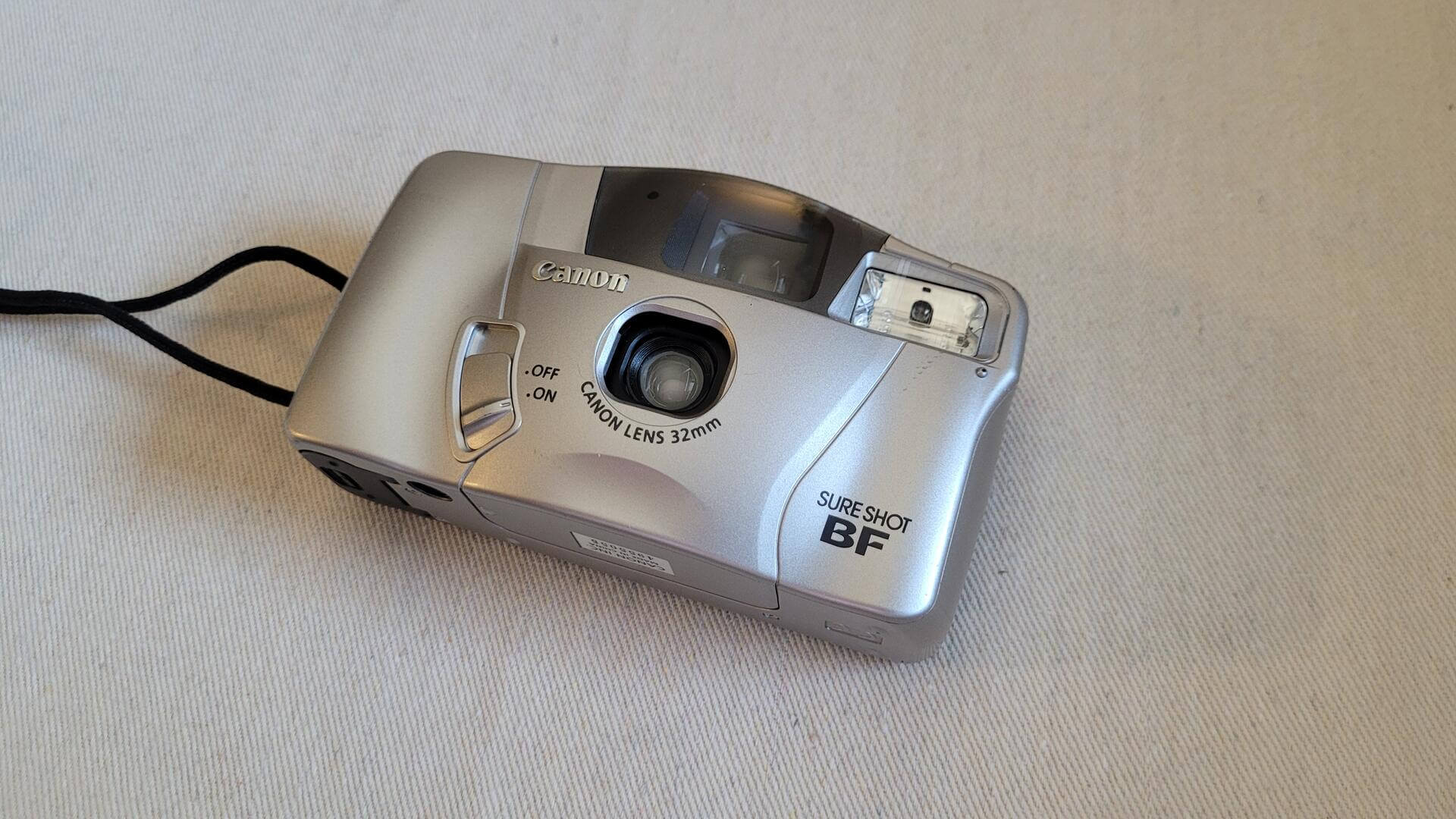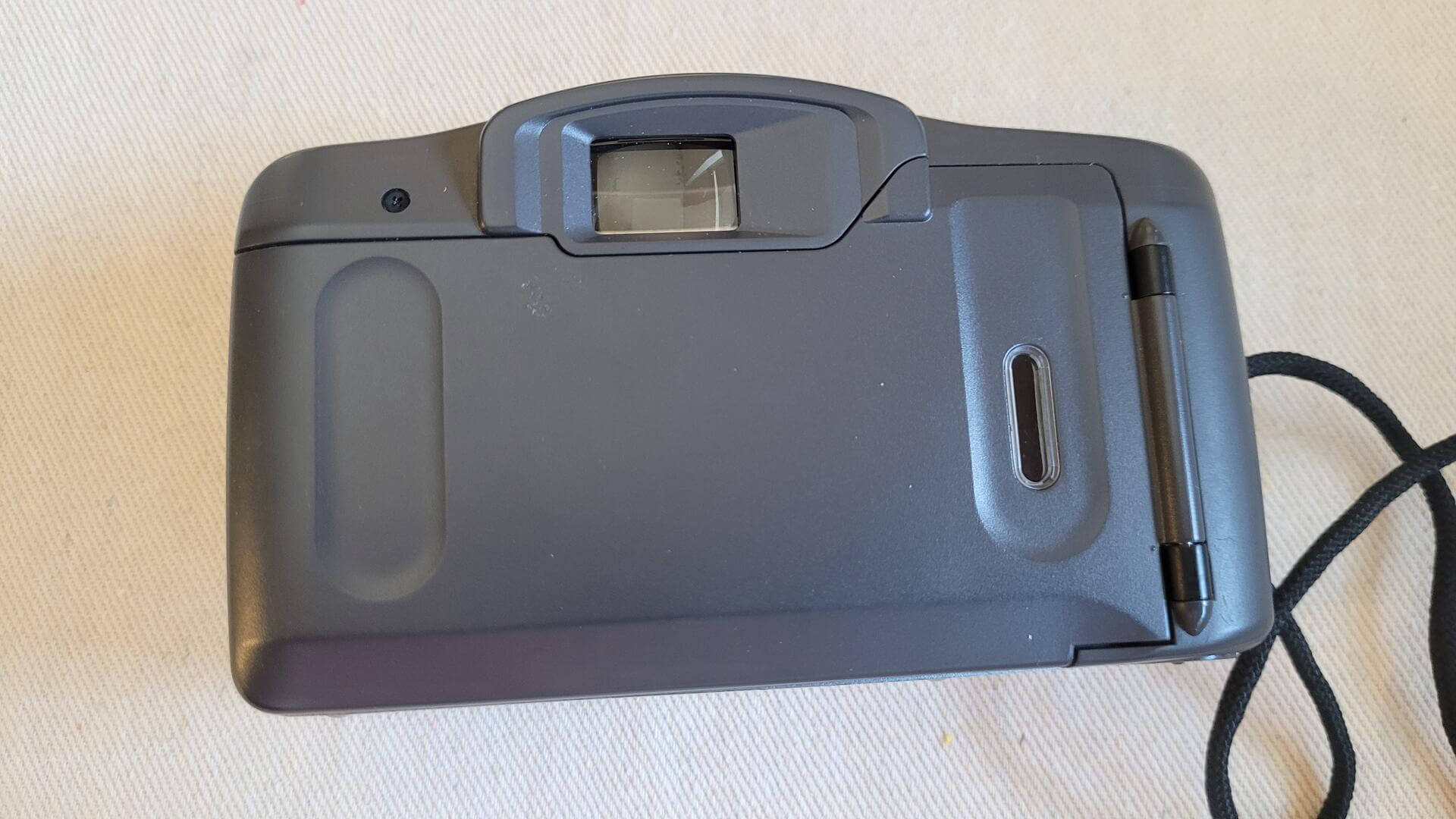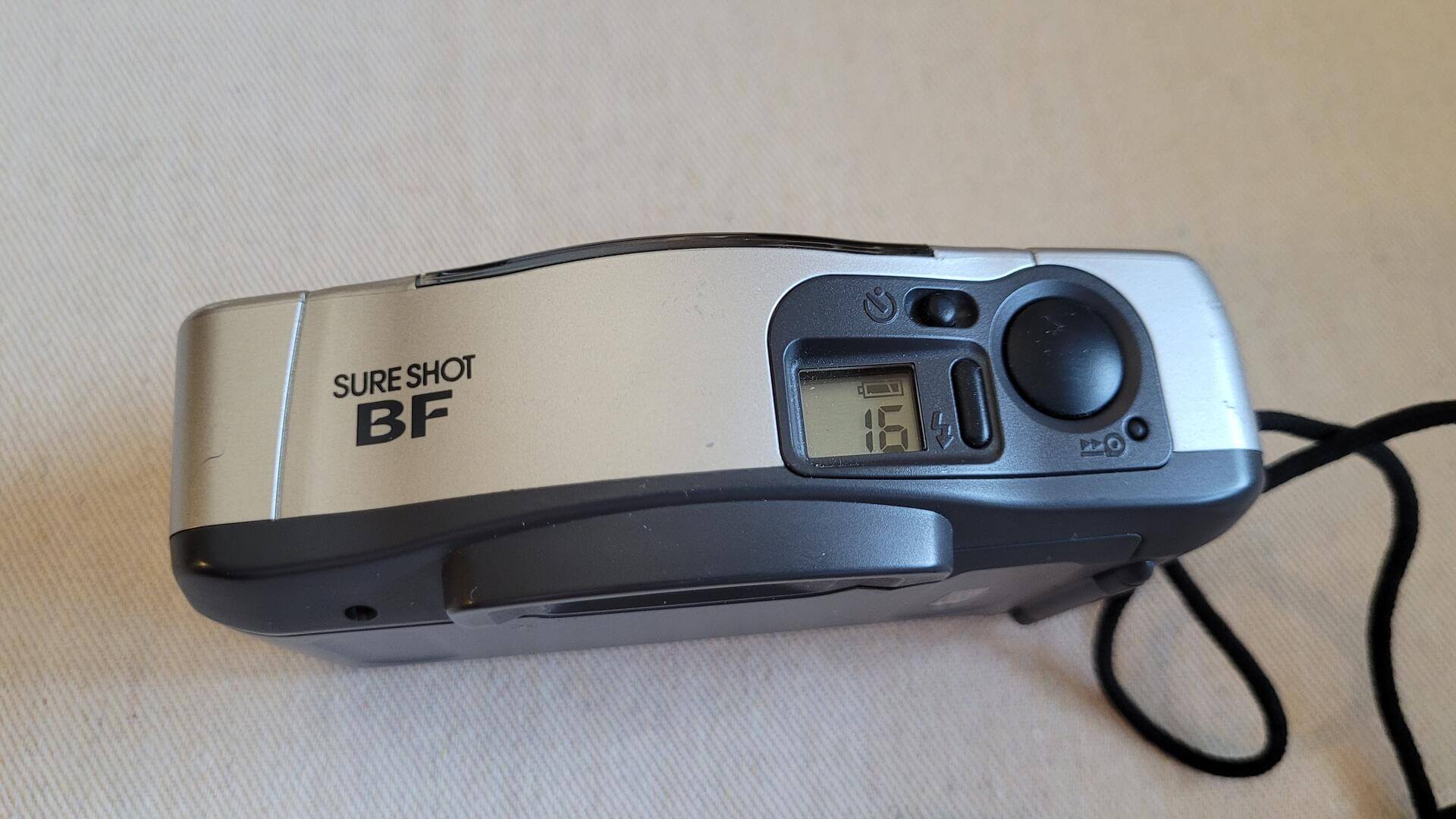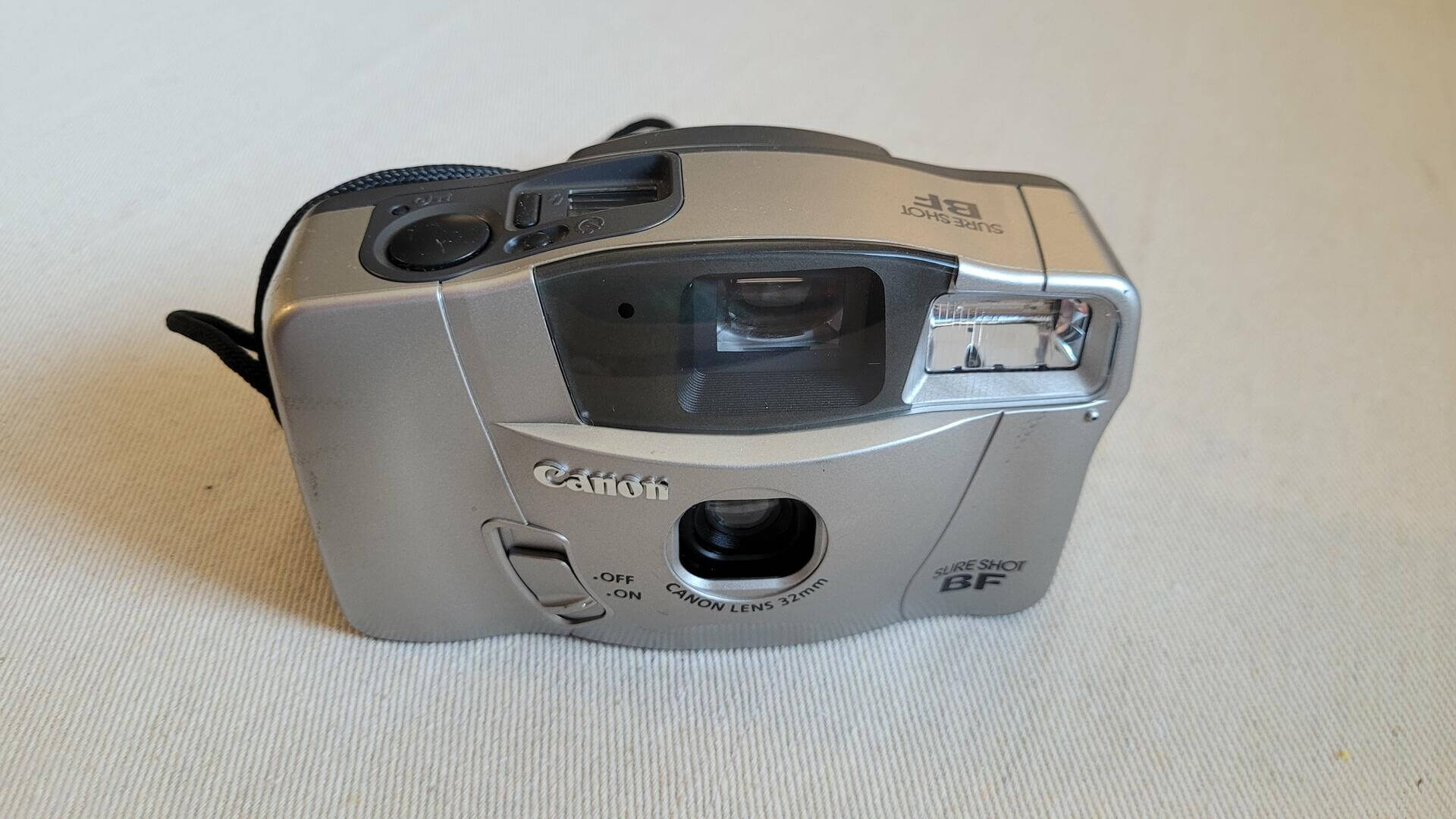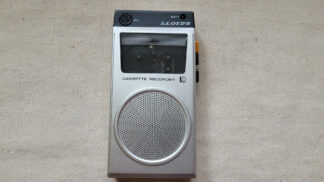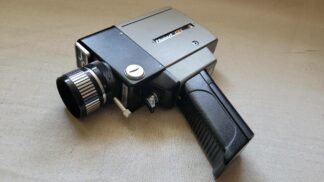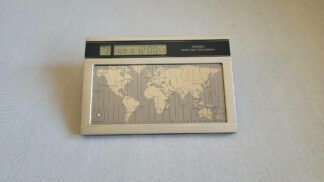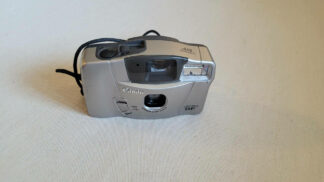Description
The Canon Sure Shot BF (aka Prima BF-9S) is fully automatic 35mm point-and-shoot vintage camera from 2000 with bright and large viewfinder. One of best selling cameras due to its simple and easy to use design. Fully automatic and equipped with a quality 32mm lens able to take great quality photos. It features a built in automatic flash and a self timer and a built in motor allows the camera to automatically advance and rewind the film for you meaning all you need to do is point and shoot.
This camera requires two ordinary AA batteries (not included).
Specifications
Type: 35mm fully automatic lens-shutter fixed focus camera
Image Size: 24 x 36mm
Lens: Canon 32 mm f/5.6
Focal Distance: 1.5 m/4.9 ft. to infinity
Shutter: Shutter with combinable programs
Viewfinder: Inverted Galilean finder
Film Loading: Automatic (automatic blank film advance)
Film Advance: Automatic, mid-roll rewind possible
Frame Counter: Counts up during film advance and counts down during film rewinding
Film Check: Film check window at back of the camera
Film Speeds: DX-coded film automatically set to ISO 100 (200) or 400
Self-timer: 10 sec. delayed shutter release timer with operation displayed on the LCD panel
Exposure Control Range: (at ISO 100)
approx. 1/125 sec. at f/13 to approx. 1/45 sec. at f/5.6
Built-in Flash: Built-in flash, automatically flashes in low light; Forced
ON/OFF possible; Coupled with red-eye reduction lamp
Flash Shooting Distance Range: ISO 100:1.5-3.0 m (4.9-9 8 ft.)
ISO 400:1.5-6.0 m (4.9-19.6 ft.)
Flash Recycling Time: Approx. 5 sec. (with new batteries)
Power Supply: Uses two LR6 AA-size batteries, Ni-Cd or lithium AA-size batteries cannot be used
Shooting Capacity: Approx. 18 rolls of 24-exp. film (50% flash use) with AA manganese alkaline batteries
Dimensions (W x H x D): 125 x 73.5 x 46 mm/4.9 x 2.9 x 1.8 in.
Weight: 195 g/6.9 oz (not including batteries)

